Harbor Fish Market is the place to get lobster in Maine. Located directly on the water of Casco Bay, our facility is expertly designed for the intake and holding of live Maine lobsters.
The process begins with the lobstermen picking up bait at our back door. Our fish production department saves fish waste (heads & bones) which our lobstermen repurpose as bait for their traps. Shortly after, the lobstermen set their traps in Casco Bay, before giving the lobsters time to search out the enticing scraps of fish.
Once the time is right, the lobstermen head back out to retrieve their catch. Upon return to the wharf the lobstermen sort them into crates by hard shell and soft shell.
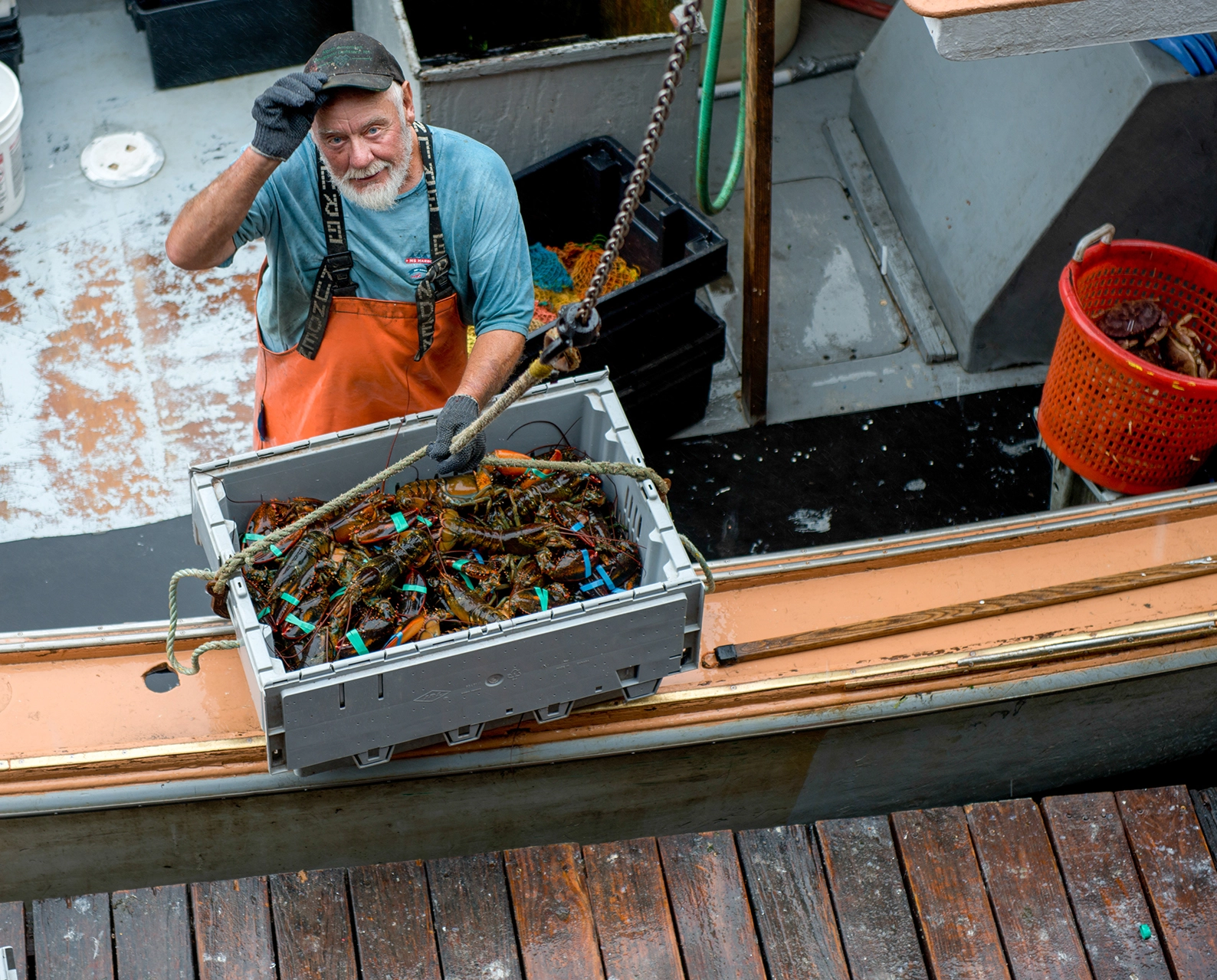
LANDING LOBSTERS
Buddy Olsen, life long Maine lobsterman, unloading lobsters and rock crabs (orange basket) after a long day of hauling traps in Casco Bay.
Once the lobsters are hoisted through our back door, they're weighed and sorted one last time. This time, they're sorted into different crates by weight. Everyone has their preference when it comes to lobster size; pre-sorting helps us find what our customers need quickly. If you're curious what the serving size is for each weight, check out our buying guide.
Finally, the lobster crates are stored in our tanks. Our tanks use all-natural salt water pumped straight in from Casco Bay. This water is constantly circulated through a filtering system, aerated, and cooled to ideal temperatures. It is in these conditions our lobster will wait until the moment they're pulled for purchase or shipment.
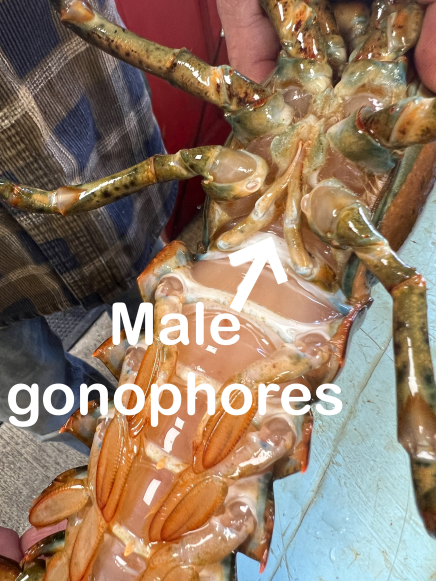
Male and female lobsters have a few subtle differences, but it’s important to identify them. Their identification helps uphold the state’s regulations and maintain the sustainable harvest of Maine’s lobster population.
The most noticeable difference is the closest pair of extremities to the body. The males (left) have firm extremities which are actually called “gonophores”, resembling small legs. While the female’s (right) are soft and feathery, called “swimmerets”.
The less notable difference is their body weight distribution. The males tend to have larger claws, more apt for defense. While the females have a wider tail, making them able to hold larger quantities of eggs.
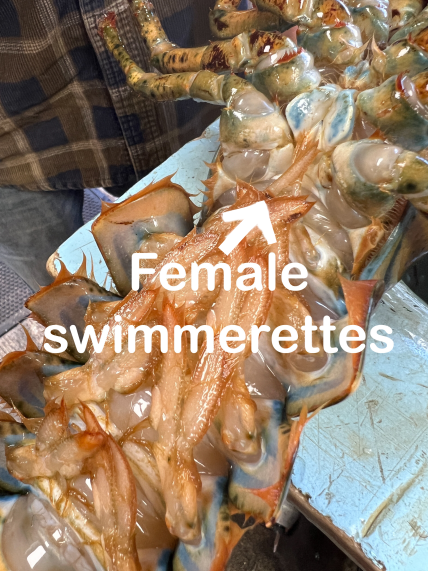
A soft shell lobster is a lobster that has, as a normal function of its growth, shed its old shell. This is why soft shells are sometimes referred to as new shells, or shedders, and hard shells can be called old shells.
Maine lobsters tend to molt sometime in early- to mid-summer. During this period, known as soft shell season, hard shell lobsters are still available (though less plentiful). Most soft shell lobsters have typically become hard shell by November or December.
| Soft Shell (New Shell) | Hard Shell (Old Shell) | |
|---|---|---|
| Yield Percentage | 15-18% | 19-22% |
| Meat Profile | Sweeter & More Tender | Firmer |
| Life Span Out of Water | <6 Hours (Summer) 12-18 Hours (Winter) | >24 Hours |
*Due to the life expectancy of soft shell lobsters: we only ship hard shell lobsters
Soft Shell
Hard Shell
*Due to the life expectancy of soft shell lobsters: we only ship hard shell lobsters
Here at Harbor Fish, we sort our lobsters into 4 different sizes, but there are others that we can’t keep. Maine has restrictions on size, both too small and too large, as well as on egg bearing females, all in order to protect the population of our precious lobsters.
The sizes we offer include the following:
In our market, each lobster is priced by the pound: weighed and priced individually. Our online store needs to do things differently since our customers pay days or weeks in advance. For this reason, we average the weight of these ranges and price them accordingly (listed above).
*Jumbos are not sold online, similar to soft shell lobsters, their life span doesn’t allow for successful shipping.
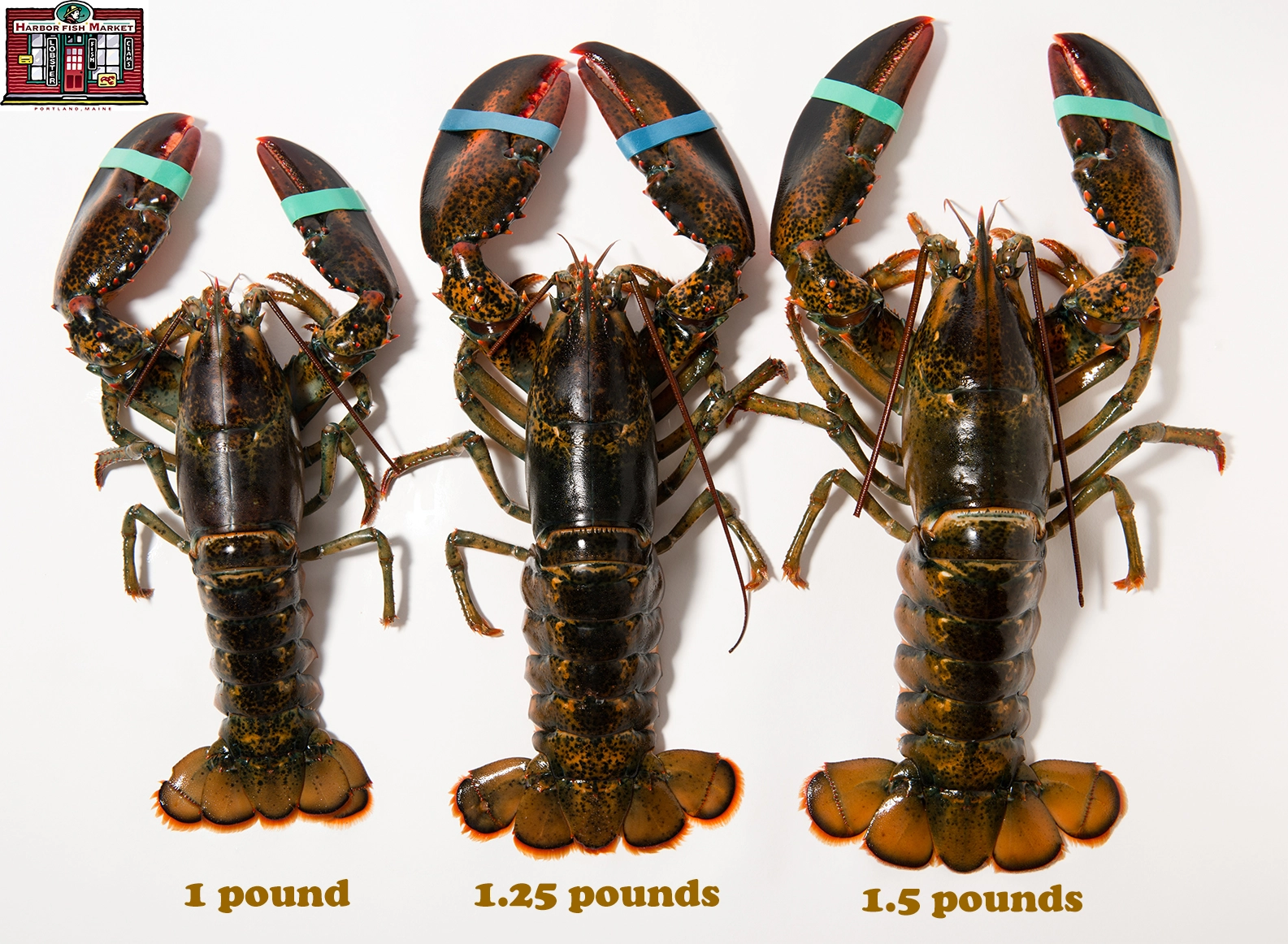
If you’re serving sides, we recommend 2 Chicks, or 1 Quarter or 1 Half per person as a meal. The very hungry (or enthusiastic) can easily handle 2 Quarters, or maybe even 2 Halves as their meal.
We highly recommend sticking to one size for your entire order. This will simplify your dinner prep, and prevent confusion (and anger?!) at the dinner table.
Follow these 3 cardinal rules to keep your lobsters alive while traveling:
Keep your lobsters cold
Keep your lobsters calm
If your lobsters arrive dead, they could still be OK to cook
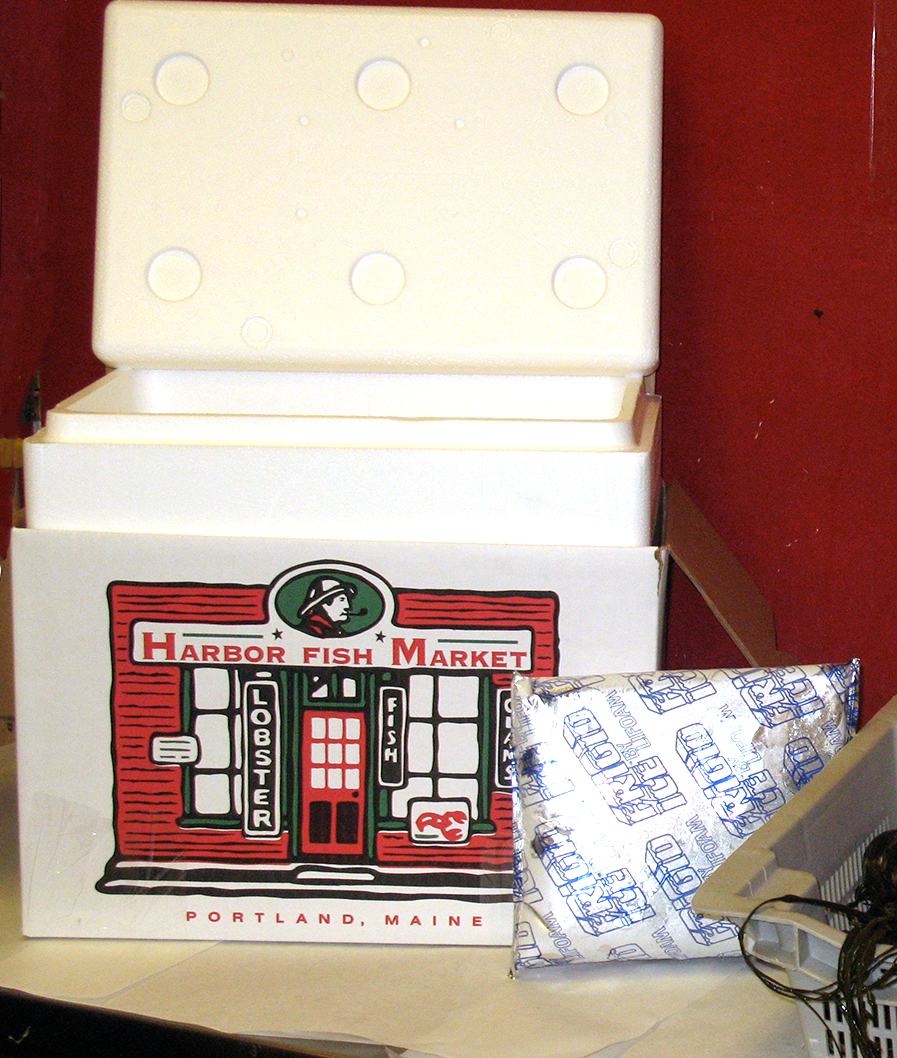
When traveling with live lobsters, your timeline will determine which type you can bring. Live lobsters have a relatively short life expectancy once removed from our tanks. After dying, lobsters release ammonia into their meat, and will make you sick. The following recommended actions are based on when you will cook your lobsters after picking them up in store.
Select your timeline for our recommendation!
You have your choice of soft or hard shell!
Hard shells are a great option.
Soft shells are season dependent:
Winter: Soft shells are hardier this time of year, they should make it alive.
Summer: We do not recommend soft shell lobsters. They have recently molted and the hot weather shortens their lifespan.
We strongly recommend hard shell lobsters less than 2 lbs.
The lifespan of soft shell and jumbo lobsters does not bode well for this type of travel time.
We do not recommend traveling with live lobsters more than 36 hours, but there are a few alternatives:
*Half cooking at home can also buy you 48 hours of shelf life. (If you have the time to cook, but not eat them)
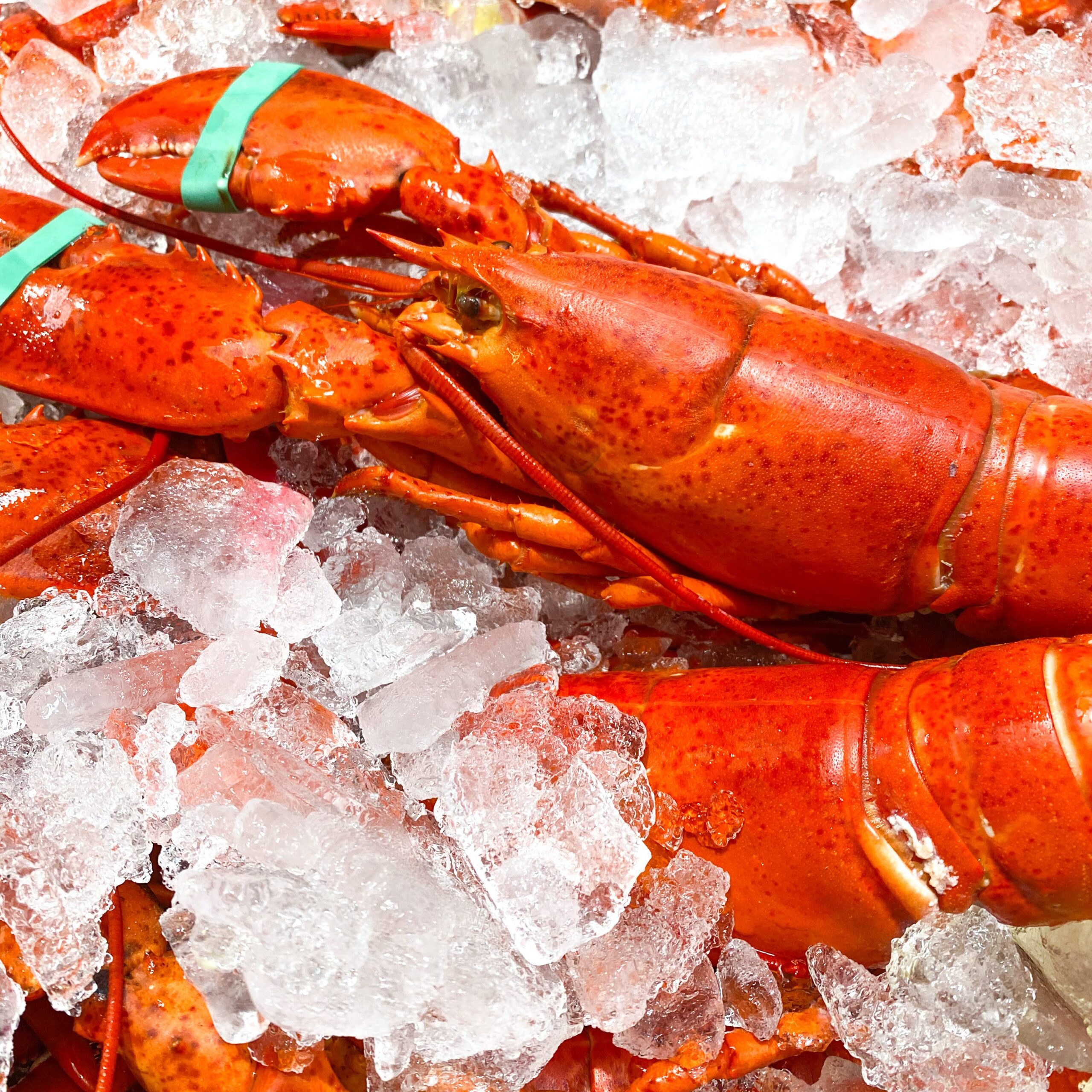
Lobsters taste best the fresher they are, so make sure you cook them as soon as possible! As for a cooking method, we suggest steaming. Bring 2-4 inches of lightly salted water to a rapid boil in a large pot. Then place the lobsters in the water and boil for the time described in the chart below. You'll know they're done when their antennas can be pulled off without much effort.
If your lobsters have been half-cooked, check the remaining cooking time listed below for both the type and size of lobster you have. Finish cooking in the same manner described above.
On this chart you'll find cooking times for all of the sizes and types of lobsters we carry. You'll notice that cooking times vary depending on the shell firmness, lobster size, and whether or not your lobsters have been partially cooked to extend their shelf life.
*Cooking times may vary from this chart depending on the firmness of the lobsters you receive, and the number of lobsters you're cooking at once
| Size | Fully Cook Hard Shells | Finish Cooking Half-Cooked Hard Shells | Fully Cook Soft Shell | Finish Cooking Half-Cooked Soft Shells |
|---|---|---|---|---|
| 1 lb | 10-14 Min | 5-7 Min | 8-12 Min | 4-6 Min |
| 1 1/4 lb | 14-18 Min | 7-9 Min | 10-15 Min | 5-7 Min |
| 1 1/2 lb | 18-21 Min | 9-11 Min | 12-17 Min | 6-8 Min |
| 2 lb | 21-25 Min | 10-12 Min | 15-20 Min | 7-10 Min |
Once lobsters are cooked, they will not spoil for one to two days as long as they are kept cold. The best way to store lobster is in an air tight container (like a zip-lock bag), on ice, in the bottom of your refrigerator. If you're unsure if you should eat your lobster, check for an ammonia smell, if present, it is not edible.
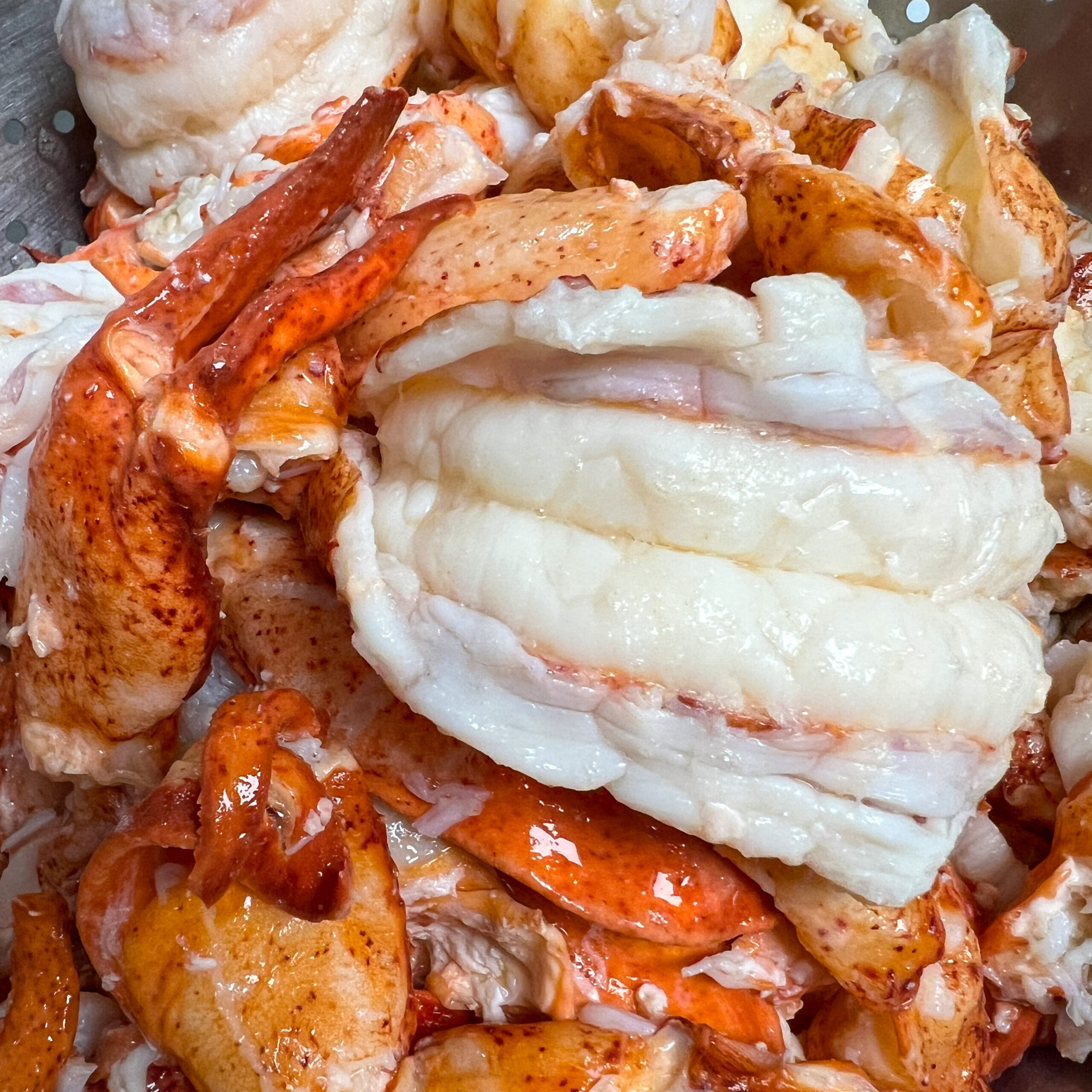
To freeze lobster, first cook the lobster, and pick the meat. Next, place the meat in a freezer safe bag and add milk (about 1 teaspoon per half pound of meat). Remove the excess air from the bag, and place in the freezer.
*The milk helps to lock in the flavor of the meat and lock out "freezer taste"

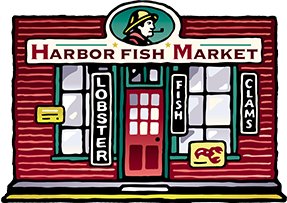
(207) 775-0251 • 9 Custom House Wharf • Portland, Maine 04101
(207) 503-5900 • 246 US Route 1 • Scarborough, Maine 04074
9 Custom House Wharf • Portland, Maine 04101
246 US Route 1 • Scarborough, Maine 04074